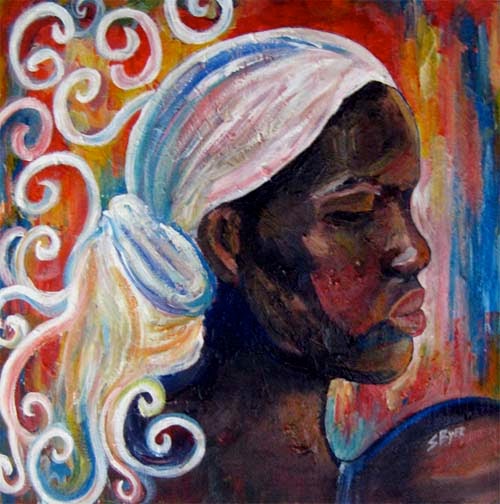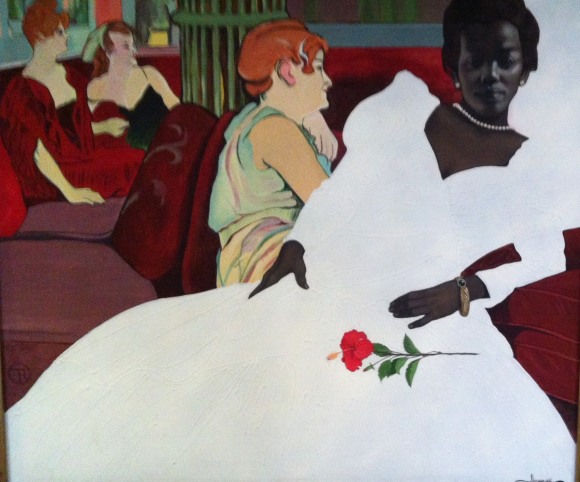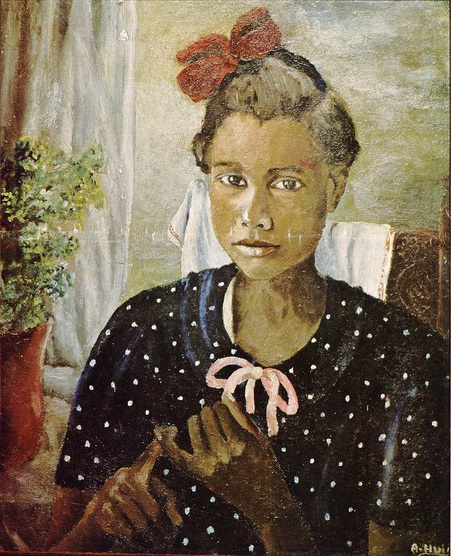
‘The Counting Lesson’ (1938), oil painting by Albert Huie
The representation of blacks as subjects in Jamaican art remained almost absent until Albert Huie (1920-2010) entered the art scene. Huie was artistically formed in an era where Ethiopianism, Rastafarianism, Garveyism, and cultural nationalism transformed the island’s social and political landscape. He incorporated the collective ideas of these movements about a black African consciousness and a black Jamaican culture in his works.
By Jorge Cuartas
In early Jamaican art, black inhabitants played a marginal role; they were portrayed as part of the scenery. This image was replaced in the late nineteenth century by the ‘market woman’, a stereotype introduced on postcards, photographs and advertisements as part of the first efforts to promote Jamaica as a tourist winter resort. Although represented in the foreground, the market woman is characterized as primitive, backward, childlike, barefooted, picturesque, tropical, and full of queer superstitions.
Albert Huie’s The Counting Lesson (1938) represents an important turning point in Jamaican art. In it a black young girl is the central point. The girl, looking intently at what is in front of her, is counting. She wears a polka dot dress, her hair is neatly coifed with a red bow, and the finger poised in midair stresses her mental calculations. All elements of the painting point to the girl’s education, respectability, and civility.

Detail ‘The Counting Lesson’ – polka dot dress

Detail ‘The Counting Lesson’ – red bow

Detail ‘The Counting Lesson’ – poised finger
On its surface the work is fairly unremarkable. However, in the Jamaican context of the 1930s, the painting changes the focus of black people as subjects in art. No longer are they part of the scenery, or used to emphasize stereotypes, but now they are the central focus of the painting. By fitting the girl into the frame of art, Huie allowed black viewers to attribute to themselves the signs of distinction, prestige, and self-hood formerly reserved for the white colonial elite.
Today, Albert Huie is locally and internationally acclaimed as a key figure in Jamaican art and remembered as ‘The Father of Jamaican painting’, but in many ways it is ‘The Counting Lesson’ that set him apart from others. The painting can be seen at National Gallery of Jamaica, where it is on permanent display.











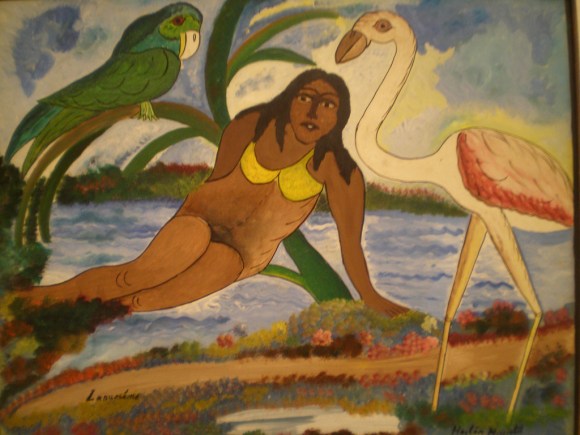 ‘The Siren’ by Hector Hyppolite, Milwaukee Museum of Art
‘The Siren’ by Hector Hyppolite, Milwaukee Museum of Art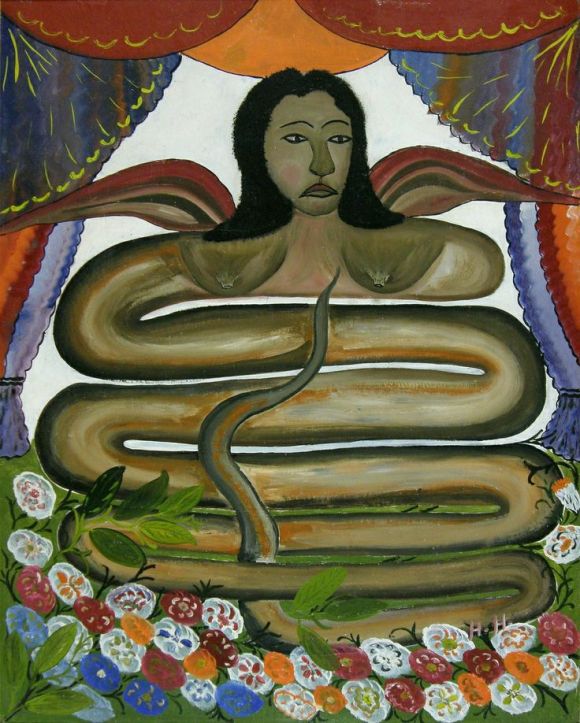 ‘Maitresse Erzulie’ by Hector Hyppolite
‘Maitresse Erzulie’ by Hector Hyppolite


